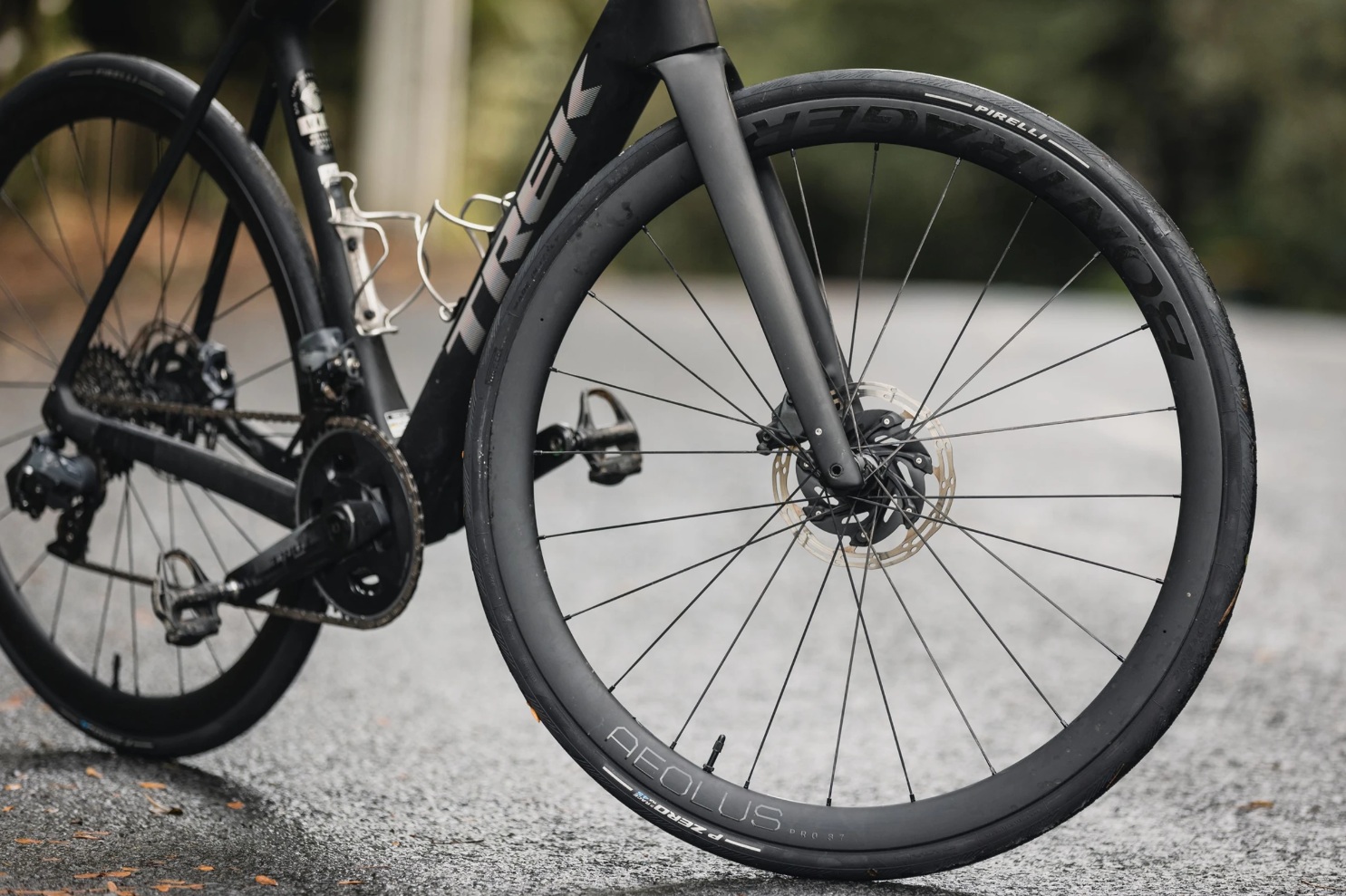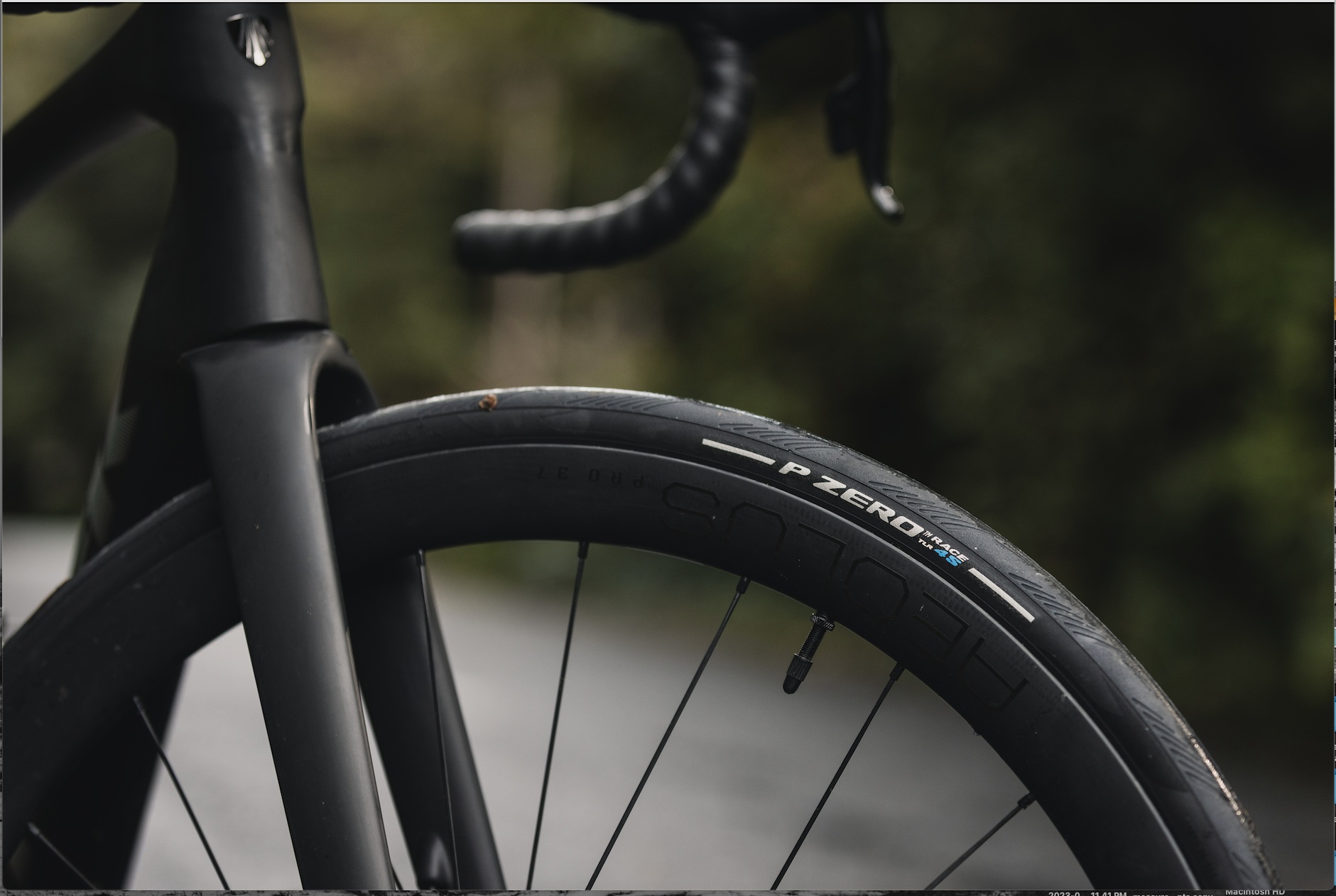Smooth. Swift. Responsive. These are my first thoughts after an initial three-hour jaunt in the jungle (Waitakere Ranges). I’m now a little further down the road in terms of testing and can happily back these statements. Thankfully, I wasn’t a delirious mess after that ride but have been after some of the longer (and wetter) ones. I suppose the form will eventually come – right?! The good thing about these tyres is that they’re made for all-weather conditions. And, with our recent weather events, you should – or rather need to – have an all-round tyre that can handle all conditions. The Pirelli P Zero Race 4S TLR tyre is the latest update to the P Zero Race range, bringing tubeless technology to the existing four-season race tyre.

So, let’s dig into the tech that makes up these tyres. They’re manufactured in Pirelli’s own factory in Italy. Just look at car racing – you can see Pirelli’s knowledge, expertise, and power within performance car tyre manufacturing. It only makes sense that they’d use that skillset for bike tyres. With that said, Pirelli P Zero Race TLR 4S is exceptional regarding performance. This is achieved through the following: firstly, SPEEDCORE tubeless technology has been employed – this is the latest in Pirelli’s casing construction and was first seen on the P Zero Race TLR update. Secondly, SmartNET Silica compound is also used, which is Pirelli’s best formulation for wet and chemical grip, and is used in the Cinturato Velo. The casing is then completed by a 120tpi nylon casing and nylon breaker to increase puncture protection. Pirelli have intentionally made this a year-round racing tyre – offering consistent grip performance in all types of weather, including wet and cold days. Pirelli claims the Race 4S TLR is designed to provide race-worthy performance in all weather conditions, especially on wet or cold surfaces. We’ve seen this from other brands, and it marks a trend towards a more realistic tyre for those of us who reside in places with changeable conditions. The tyre is available in 28, 30mm and 32mm.
I have a bit more tech and install to go over, if you’re still with me?! These tyres use Pirelli’s SmartNet silica compound, which Pirelli claim creates a more consistent material, thanks to the elongated shape of the silica particles, which line up together better – thus, a more durable tyre. Also, the compound has a ‘natural affinity for water’ – which means the particles have a wide surface area that helps provide better traction in wet conditions. The SPEEDCORE structure is new on the Race TLR. It uses an Aramid band encased in rubber, for full bead-to-bead coverage. Again, Pirelli states this layer adds to the tyres’ puncture protection whilst remaining supple enough to provide race-quality rolling resistance.
Out of the box, the bead felt thick, which is probably down to way the Aramid liner wraps up and around the bead inside the tyre. I’ve had a few Pirelli tyres to set up over the years and haven’t had much of an issue, mostly. And, thankfully, the Race 4S TLR was no different. The thick bead hooked nicely into the rim and seated easily with a tubeless booster pump. After a ride or two, the rear did start to go down slowly but was easily fixed with a touch more sealant. Then, throughout the test period, they stayed inflated. Of course, this is dependent on rim, tyre and sealant combination.
Across multiple rides, amidst all types of conditions, the P Zero Race 4S TLR really excelled in terms of grip. This was evident after riding in wet conditions or when the roads were slightly damp, with the short amount of sunlight winter offers. In the corners, they offer great stability. As stated earlier, there’s a swiftness of this rubber which is down to good rolling resistance. But this isn’t over-the-top, as it strikes the right balance between all-weather performance with a fast-rolling feel, along with puncture protection. After rolling this rubber around for the past six weeks, I can attest it’s well suited to riders who want the ‘race feel’ without the hassle of switching tyres every time the weather turns. And, you know it bloody will if you reside on our antipodean island.
The Race 4S TLR is the same but different to the clincher version. It’s got the same tread pattern and looks similar, but this version is tubeless. So, these are within the race range but probably aren’t going to stack up to your full-on race tyres. Save those for the summer days, time trials or when you want to bag some Strava segments. In saying that, these tyres are very good in terms of rolling resistance. And, right now, I don’t have the form nor desire to bag any Strava segments anyway! These tyres grip – bloody well. I have ridden them in the shithouse conditions we’ve been experiencing way too much recently. Pushing these tyres into slick corners, the Race 4S TLR performed well. My confidence grew after each ride and these tyres didn’t once experience any loss of grip. So, they probably do have a tipping point in which they would slip out but, quite frankly, I didn’t want to go there. It must be said though, for a larger rider, the grip and stopping power was superb. The rain came, and came some more, and there I was encountering sketchy surfaces, broken roads and a plethora of road debris and they haven’t punctured yet. So, there’s a few small nicks here or there but nothing has resulted in loss of pressure. The Race 4S TLR stack up well – blending ‘race-feel’ with a heap of toughness and a high level of puncture protection.

The Italian brand delivers on this set of rubber, regarding all-weather, high performance, tubeless which comes in at a good price point. For me, it excels in poor weather conditions with its superior grip. The feel is responsive, high quality and with rolling resistance. As with any set of tyres, punctures can happen, but the puncture protection offered is very adequate. Again, I didn’t experience any punctures during the test period. I think the size range covers the road market well, but I’d like to see a slightly wider version for those all-road types. The Race 4S TLR is very well suited to our climate and conditions.


